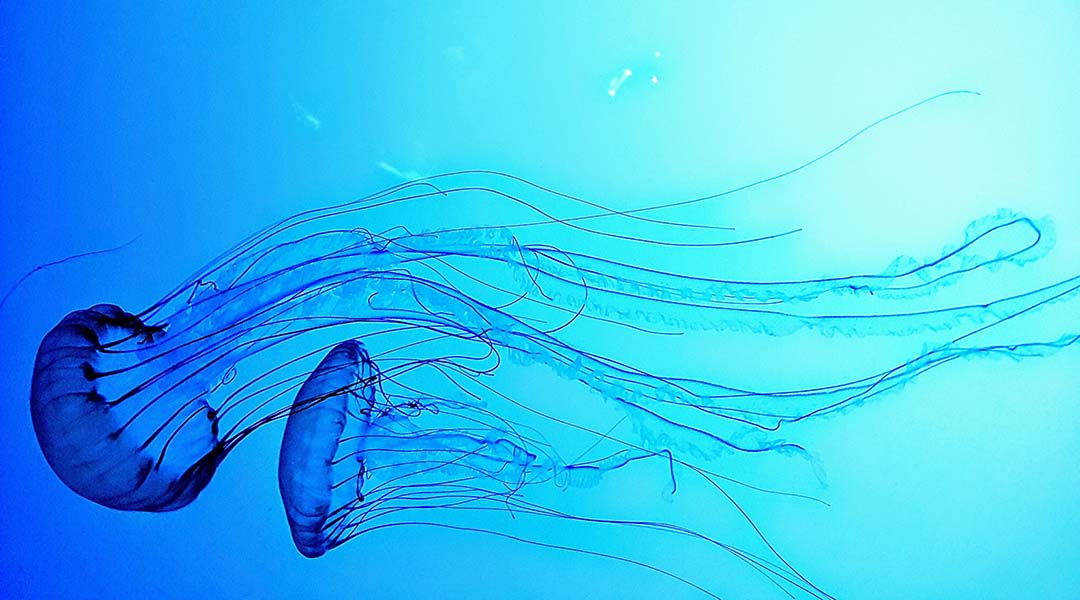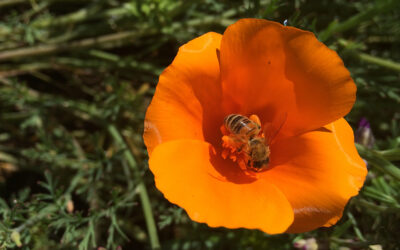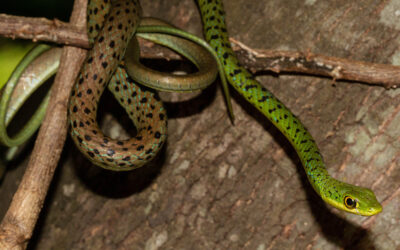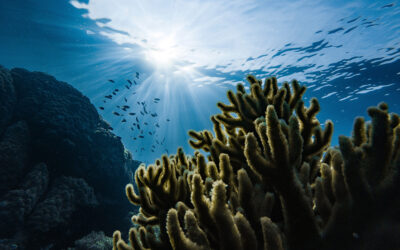Creating and storing memories of experiences as well as altering our behavior based on these memories is a fundamental function of the nervous system. This kind of associative learning, called operant conditioning, has been established in flies, mice, and of course, humans. For purposes of survival, the ability to learn from previous experiences and act in different ways can be especially important.
Now, for the first time, researchers have shown that simple box jellyfish also have the ability to do this too, learning from past negative experiences and changing their behavior accordingly.
“The study is the first to convincingly demonstrate operant conditioning in the form of avoidance learning in any animal in the phylum Cnidaria — jellyfish, box jellyfish, sea anemones, corals, ]and] hydras,” Ken Cheng, a researcher at Macquarie University, Australia, who was not involved in the study, wrote in an email.
Learning without a centralized brain
Cnidarians, a group of animals to which jellyfish belong, are considered to be some of the first creatures with a primitive nervous system. “As the whole phylum is the sister group to the huge conglomerate of Bilateria, which includes insects, molluscs, and us vertebrates, it might mean that associative learning is widespread in animals with any kind of nervous system,” added Cheng.
A type of box jellyfish found in the Caribbean, Tripedalia cystophora lives in sunlit surface waters. On the hunt for miniscule crustaceans that reside amongst the underwater roots of mangroves, the box jellyfish risks physical injury to its delicate body if it bumps into the roots.
While the jellyfish lacks a centralized brain, it has a visual system nestled within four neuron clusters. Called rhopalia, each cluster has some thousand neurons and six eyes. Besides assisting with visual cues, this rhopalial nervous system has various other functions, including that of a swim pacemaker.
Previous research has shown that when the box jellyfish visually sense the underwater roots of mangroves, their swim pacemaker quickly guides them away from the barrier in a display of avoidance behavior. The jellyfish is using visual contrast between the prop roots and water to determine its distance from the obstacle.
In response to the visual stimuli, the rhopalia trigger the jellyfish’s swimming contractions away from the roots. But constantly changing water conditions and the presence of algal matter can affect the jellyfish’s ability to correctly assess contrast and distance, making it difficult to avoid collision without limiting foraging.
Overcoming obstacles
Jan Bielecki, a researcher at Kiel University, Germany, and colleagues conducted a study to see if the jellyfish learned from their past encounters with obstacles.
“We designed the experiments using sort of a bottom-up approach; we let the animals decide how to conduct the tests. In the sense that you cannot judge a fish by its ability to climb trees, we were very careful to use stimuli that are familiar to the animal in the natural habitat,” said Bielecki, in an email. “We used their obstacle avoidance behavior and the observation that the animals have to have a regulatory mechanism in place to protect their fragile body.”
Within an opaque round tank with a diameter of 16 cm, fingernail-sized jellyfish were subjected to one of three visual scenes: a plastic cylinder with alternating vertical black and white stripes, gray and white stripes, or a completely gray space. The black and gray stripes were meant to imitate prop roots.
When faced with gray roots, the jellyfish swam along the wall of the cylinder. But over the course of 7.5 minutes, they learned to stay away from the walls. The jellyfish increased their distance from the wall by 50% and halved the number of times they bumped into the barriers. The gray stripes and wall bumps acted as visual and mechanical stimuli, respectively. The researchers found that both kinds of stimuli are necessary for associative learning.
On the other hand, the jellyfish almost entirely stayed away from the wall with black stripes, leading to barely any collisions and an absence of mechanical stimulation. In this scenario, the jellyfish did not increase the number of times they carried out an avoidance maneuver. But they slightly increased their distance from the wall.
When faced with a uniform gray wall, the jellyfish kept making contact. But with no visual stimuli available, no learning occurred and the bumping continued through the trial.
Identifying the learning center
In order to find the learning center of these jellyfish, Bielecki’s team isolated the rhopalia. The research team placed an isolated rhopalium in front of a projecting screen to provide a visual stimulus to the lens, while an electric pulse acted as the mechanical stimulus.
As the party responsible for speedier swim contractions away from an obstacle, the swim pacemaker’s signal frequency was used as a proxy for avoidance behavior. “A short burst of high frequency in response to the visual stimulus indicates obstacle avoidance response,” added Bielecki.
When exposed to both the visual and mechanical stimuli, the swim pacemaker grew more responsive. When the two stimuli were uncoupled, however, the pacemaker was no more responsive than normal. The researchers were surprised at the pace of learning in the jellyfish — five training sessions sufficed to achieve learning. This confirmed that the rhopalia was the learning center of the jellyfish.
“Box jellyfish exhibits associative learning with a very sparse nervous system,” said Bielecki. Even a primitive and decentralized group of neurons can foster learning, suggesting that “learning was an integrated part of neurons from the beginning of nervous system evolution.” In the future, the research team plans to understand learning at the cellular level in jellyfish.
Reference: Jan Bielecki, et al., Associative learning in the box jellyfish Tripedalia cystophora, Current Biology (2023). DOI: 10.1016/j.cub.2023.08.056
Feature image credit: Isaiah B on Unsplash

















